Have you ever tried one of those tricky “closing techniques” that are supposed to transform hesitant prospects into instant customers?
Some of the “experts” on this topic tell you to say things like, “Would you rather have it in blue or in yellow?” Or, “Do you want delivery on the first or the eighth?” Or, “Let’s go ahead and get the paperwork started. Here, you can use my pen.” (Then you hand the person a fancy pen.) Or, “Try it for 30 days. If you don’t like it, we’ll take it back.”
The problem with all of these techniques is that prospects can see them coming a mile away, and they usually feel like they’re under attack – which they are.
Salespeople who use these techniques, and others just as ineffective, do so because they are under the mistaken belief that these tricks sometimes deliver sales. Actually, when prospects decide to buy after the salesperson has said something like this, they buy in spite of the closing technique, not because of it. Instead of trying to use a tricky closing maneuver at the end of the sales process, you should secure commitment for a yes-or-no decision before you even make your presentation.
Unless you secure that kind of clear commitment, there is no guarantee that you will obtain a decision after making the presentation. And most of the time, you won’t. Unfortunately, few salespeople negotiate this kind of agreement with prospects prior to delivering a presentation. As a result, they find themselves in chase mode, pursuing the prospect by phone or email for a decision after being told, “We’ll let you know.” (Or some variation.)
The whole purpose of your presentation is to obtain a decision. During your presentation, you will demonstrate the degree of fit between your product or service and the prospect’s need. Then you will request and receive a decision! How? By launching a clear discussion about where you are, what you’re doing together, and what’s going to happen next — before the presentation even begins. That discussion might start with something like this:
“So, when we all last spoke, we all agreed that we’d have an hour of uninterrupted time for this discussion. We also agreed that we’d conclude our meeting today with an up-or-down decision from your side about whether or not to use our services. Is that still what we’re looking at?”
Of course, a good deal of work on both sides must take place before you can expect to receive this kind of commitment at the beginning of your presentation meeting! The work that happens on your side before you ask for this commitment is called qualifying. That’s where you confirm that there is a pressing problem you and your company can solve, that there are sufficient resources available on the prospect’s side to solve that problem, and that there is a clear decision process that supports both sides and is understood by both sides.
Assuming that all that is true, and assuming that you do get a clear commitment to make a decision today, you would want to continue with a review of what you’ve uncovered during all the qualification work you’ve conducted. That might sound like the following:
“Before we get started, I want to make sure that we’re all still on the same track that brought us here today. In previous meetings, you shared with me the three primary goals for the project. The first is to _______________. The second is to _______________. And the third is to establish a reliable _______________. You indicated that you needed to have the project completed by __________. And you had a budget of _____ dollars. Did I miss anything, or has anything changed?”
By the way, If something has changed, but it doesn’t require a material change in the solution you are prepared to present, you can proceed with your presentation, focusing only on the solutions to the problem you identified in your overview. On the other hand, if the change in circumstances does have a material impact, the best course of action may be to reschedule the presentation so you can make whatever changes are necessary.
This kind of clear, frank discussion about exactly what each side expects from the presentation, and from the larger business relationship, must take place in order for your presentation to proceed. If changed circumstances make some anticipated part of the commitment unenforceable, it may still be possible for you to proceed if a new, mutually beneficial agreement can be established. For example, if the original agreement for your presentation meeting called for three people to make the decision and only two of them are present at this discussion, the presentation can proceed if the two people present agree to make a decision despite the absence of the third person. But if you don’t get a clear commitment about a decision, you should reschedule the meeting for a time when that commitment can be made and upheld!
That point bears repeating. If you can’t get a commitment for a yes-or-no decision, don’t make the commitment of delivering your presentation! If you follow this simple rule, you’ll find that “closing tricks” are unnecessary. Very often, at the end of your presentation, you’ll simply ask, “What happens next?” – and the prospect will close the deal for you. That’s not only easier on everyone, but it also keeps you from having to memorize any tricky closing maneuvers!

About Us
DEC International is a database publisher that collects information for businesses and organizations that are targeting B2B selling or the Georgia construction market.
Why Us DEC?
Contact Us
ADDRESS
2850 Johnson Ferry Road
Marietta, Georgia 30062
REACH OUT
800-718-5323
